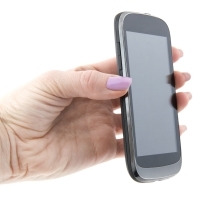What Mobile Payment Solutions Need to Take Off

Mobile device penetration globally has seen some phenomenal numbers in the last several years, and this is only going to continue to grow.
Mobile devices are increasingly being used for commerce transactions—and not just for sitting at home and buying something online, but also at grocery stores, gas stations, and restaurants. The growing trend is moving away from cash and cards and moving toward totally mobile payment transactions.
Mobile payment solutions are not an entirely new idea. Google Wallet has existed for some years now, and Apple Pay made a strong entry last year. Recently Samsung introduced its payment solution, Samsung Pay. There are dozens of options available in the market that leverage varied technologies, including cloud computing and near field communications.
With all the growth we are witnessing in the mobile space, mobile payment solutions seem to be the way of the future. However, these solutions have to be robust and win the confidence of merchants, payment processors, and end-users. You may expect that the US would be the top adopter of such mobile payment options, but it’s not happening. The practice of using your phone to pay for something actually is being better received in developing countries.
While mobile payment as a trend is being promoted by solution providers, for this to become a mainstream practice, a concerted effort by both merchants and users is important. A recent survey of four hundred iOS users with Apple Pay on their phones showed that only 4.5% of them used mobile payment terminals. Why is this the case?
One obvious concern is security. The mobile payment provider partners with the credit card service, such as Visa, and there is a lot of critical end-user information exchanged over the course of the transaction. Visa has laid out a set of best practices to follow in enabling mobile payment solutions, including how to secure mobile transactions, how to limit exposure of user account data, and how to prevent software attacks on mobile devices.
The good thing is that the landscape is not limited to just the top few large players. Several small businesses have also started selling their solutions, giving users a range of options and ultimately making it a “survival of the fittest” scenario. Time will tell if using your phone to pay for your morning coffee will actually become a routine.

